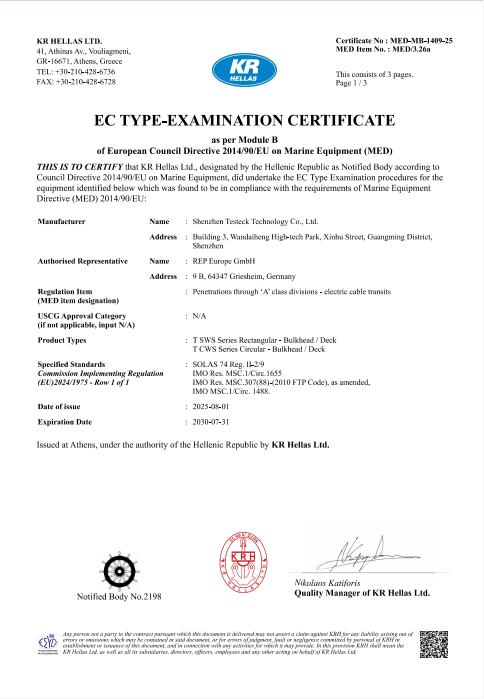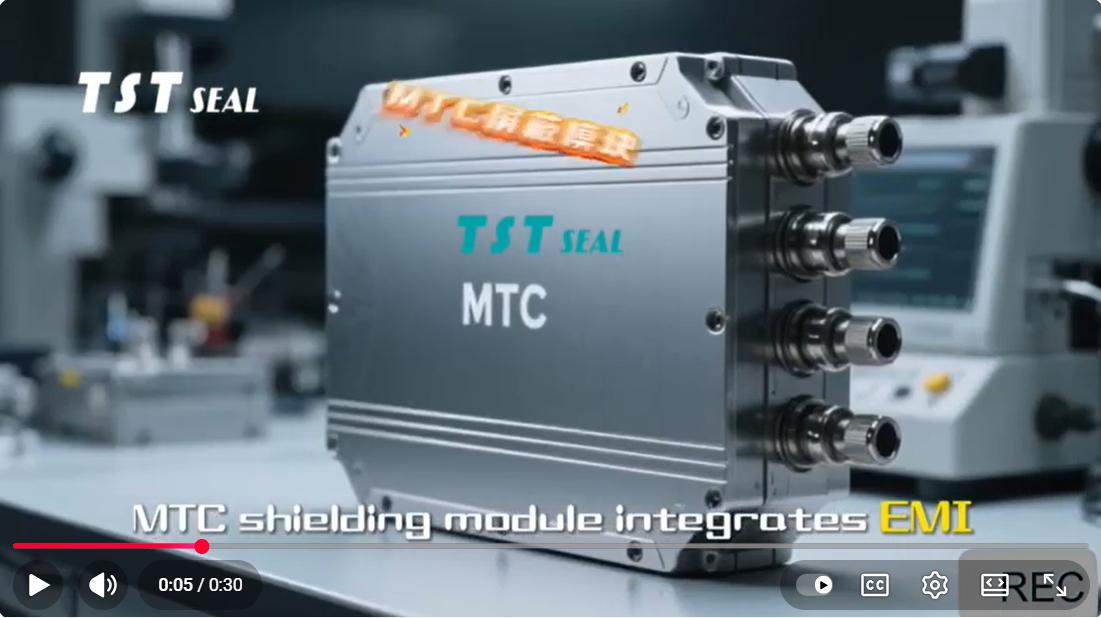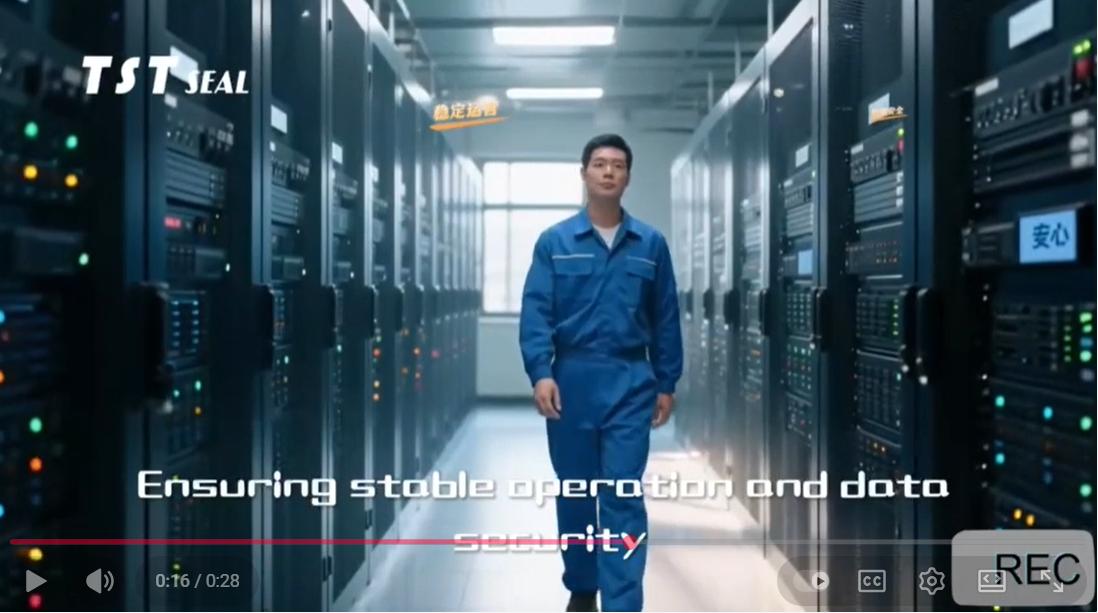
TST Seal :
- Fireproof
- Cable fixinAg
- Watertight
- Airtight
- Dustproof
- Noise reduction
- Vibration reduction
- Pressure resistance
- Corrosion resistance
- EMI/EMP
- Pest & rodent resistance
Related Articles
- circular seal (7)
- flange sealing (1)
- industrial sealing (2)
- MCT Transit Sealing System (2)
- rectangular seal (34)
- sealing modules (31)
- sealing solution (12)
How to achieve electromagnetic interference shielding of sealing modules for military equipment?

How to achieve electromagnetic interference shielding of sealed modules for military equipment?
With the rapid development of power and electronic technology, the automation of electrical systems has been continuously improved, and the confusion brought by electromagnetic interference has also come along. In the future, it is crucial to eliminate electromagnetic interference (EMI, EMP) in power and electronic systems. In some special occasions, such as nuclear power, military industry, and large-scale power equipment, it is also necessary to consider the electronic countermeasures during wartime to avoid the impact of electromagnetic pulse bombs that paralyze the entire system.
In response to the above special needs, TST seal has developed and produced sealing modules with shielding (ES, PE) and grounding (BG) functions, which are combined with conventional sealing modules to greatly reduce the conduction of electromagnetic interference signals along the cable shielding layer (360° surround wrapping to eliminate the “pigtail” effect), and greatly reduce spatial conduction interference.
Offshore booster station
Offshore booster station
To use sealing modules to achieve shielding of electromagnetic interference (EMI) signals, it is necessary to combine material selection, structural design, grounding technology and comprehensive systematic solutions. The following is a detailed method based on knowledge base information:
1. Core principle: Basic mechanism of electromagnetic shielding of sealing module
Electromagnetic shielding is achieved through the following three mechanisms:
Absorption loss: The shielding material interacts with the electromagnetic field through electric dipoles or magnetic dipoles, converting electromagnetic energy into heat energy.
Reflection loss: The shielding layer does not match the spatial impedance and reflects electromagnetic waves (such as the high reflectivity of metal materials).
Multiple reflections: Electromagnetic waves are reflected and attenuated multiple times in the shielding layer, further reducing the energy.
2. Design and material selection of sealing module
(1) Conductive material and structural design
Conductive copper foil/copper braid:
The sealing module of TST seal uses copper foil or copper braid to wrap the cable shielding layer or metal pipe 360° to form a low-impedance grounding path.
Function: Block electromagnetic interference from being conducted along the cable (eliminating the “pigtail effect”) and conduct the interference signal to the earth through grounding.
Example: Installing such a module at the cable entrance of the shielding room and control room can block external radiation and conducted interference.
Semiconductor chip and grounding frame:
The module is embedded with semiconductor chips, which conduct space radiation to copper foil, and then form a Faraday cage through the grounding metal frame to shield external interference.
Heavy-duty conductive braided tape:
Used for reliable grounding of armored cables or shielded cables, to guide lightning strikes and surge currents to the common ground terminal to protect the equipment.
(2) Multi-layer shielding structure
Composite material stacking:
The shielding effectiveness is enhanced by multiple layers of materials (such as aluminum foil + copper mesh + conductive rubber). For example:
Aluminum foil Mylar: A composite of soft aluminum foil and polyester film, suitable for communication cable shielding, with a shielding range of 100kHz–3GHz.
MXene/carbon composite material: An emerging two-dimensional material with high conductivity and flexibility, suitable for high-frequency shielding of 5G equipment.
Copper-plated glass fiber fabric:
Copper-plated glass fiber fabric, deposits copper nanoparticles on a three-dimensional structure by chemical copper plating, and has light weight, high temperature resistance and excellent shielding performance (EMI SE can reach 62.65 dB).
3. Optimization of grounding system
(1) Low impedance grounding path
Connection between grounding frame and cable shielding layer:
The TST seal module conducts the shielding layer signal to the ground through the grounding metal frame, ensuring that the grounding line is short and stable, reducing impedance.
Faraday cage design:
Cooperates with the vehicle shell and building shielding layer to form a complete closed loop to block the entry of external electromagnetic waves.
(2) Partition shielding and conformal shielding
Partition shielding (SiP technology):
TST seal’s SiP partition shielding technology isolates different functional modules through metal welding wire + sputtering, conductive glue + sputtering and other solutions to solve internal electromagnetic compatibility problems.
Conformal electromagnetic barrier:
Sputtering a 5-10 micron metal layer (such as copper or silver) on the surface of the chip package to achieve efficient shielding without increasing size (shielding effectiveness ≥30dB).
4. Application sc
enarios and module types of sealing modules
(1) Classification of sealing modules
Select different types of shielding modules according to the application scenario:
ES module:
It reduces both spatial conduction interference and cable shielding layer conduction interference, and is suitable for control rooms and computer rooms.
PE module:
Only shields the cable shield layer to conduct interference, and is used in general industrial equipment.
BG module:
Designed specifically for high current/high voltage environments (such as power generation equipment, substations), providing grounding protection.
(2) Typical applications
Aviation/aerospace:
The shield layer of the 600℃ high temperature resistant cable is combined with conductive copper foil to block high frequency interference in the engine area.
Rail transit:
TST seal’s coaxial cable uses low smoke zero halogen (LSZH) sheath + copper mesh shielding to meet EN50264 standards.
Data center:
Cable penetration sealing system suppliers (such as TST seal) combine copper foil shielding to prevent signal crosstalk in the machine room.
5. Key points for sealing module installation and maintenance
(1) Installation specifications
360° wrapping: Ensure that the shielding material completely covers the cable or pipe to avoid gaps causing magnetic leakage.
Grounding reliability:
– The length of the grounding wire is ≤0.1λ (λ is the wavelength of the interference signal) to reduce inductive reactance.
– Ground terminals are crimped or welded to avoid false connections.
Dynamic environment adaptation:
For vibration scenarios (such as ships and high-speed railways), flexible conductive materials (such as silicone rubber + copper foil composite sheaths) are selected.
(2) Sealing module maintenance and testing
Regular inspection:
– Check whether the shielding layer is damaged and whether the grounding connection is loose.
– Use a spectrum analyzer to detect shielding effectiveness (such as EMI SE ≥ 30dB).
Environmental adaptability test:
– Salt spray test (IEC 60068-2-11) to verify corrosion resistance.
– High and low temperature cycle test (-60°C to +600°C) to ensure material stability.
6. Sealing module innovation technology and future trends
(1) New material breakthrough
Aerogel material:
TOCNF/CGG aerogel (density 0.1071 g/cm³) prepared by double cross-linking strategy has a shielding effectiveness of 62.65 dB, which is suitable for lightweight equipment.
Flexible shielding materials:
TST seal’s newly developed polyimide (PI)-based composite material takes into account both high and low frequency shielding performance to meet the needs of wearable devices.
(2) Intelligent integration
Through-wall sealed filter connector:
TST seal’s patented technology dynamically suppresses interference in specific frequency bands (such as 5G communication bands) through built-in filtering elements.
Intelligent monitoring system:
Integrated optical fiber sensors monitor cable temperature and stress status in real time to predict the risk of shielding failure.
To achieve electromagnetic interference shielding through TST seal sealing modules, it is necessary to comprehensively consider material conductivity, structural integrity, grounding reliability and scene adaptability. TST seal’s copper foil/copper braided tape modules, partitioned shielding technology, copper-plated glass fiber fabric and other solutions all demonstrate a variety of choices from traditional metals to new composite materials. In the future, with the growing demand for lightweight, flexible and intelligent, shielding technology will develop in the direction of multifunctional integration and adaptability. If you need sealing modules for nuclear power, aviation, rail transit, military industry, large equipment and other places, please email us and you can also get free samples.







